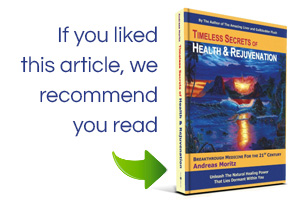By: Janice Lloyd (2012)
Source: USA TODAY
Taking a calcium supplement to help prevent bones from thinning puts people at a greater risk for heart attacks, says a report out today in the journal Heart.
The study of approximately 24,000 people between the ages of 35 and 64 found participants who took regular calcium supplements were 86% more likely to have a heart attack than those who didn’t take supplements. Those who took only calcium supplements were twice as likely to suffer a heart attack as those who didn’t take any vitamin supplements. Calcium supplements have been linked to kidney stones and bloating in other studies, according to the National Institutes of Health.
“Calcium supplements have been widely embraced by doctors and the public, on the grounds that they are a natural and therefore safe way of preventing osteoporatic fractures,” the authors write. “We should return to seeing calcium as an important component of a balanced diet.”
The study, primarily undertaken to determine if calcium supplements modify cardiovascular risk factors, found no direct link between the supplements and heart attacks, nor did they identify brands of supplements. Participants answered questions about their use of supplements and their diet during an 11-year study of their health.
The study did not look at what caused the heart attacks, but the authors write: “Supplements cause calcium levels to soar above the normal range, and it is this flooding effect which might ultimately be harmful.”
“Doctors who work with the elderly and people who are postmenopausal routinely tell them to take a calcium supplement,” says Linda Russell, a rheumatologist and osteoporosis specialist at Hospital for Special Surgery in New York. “It’s really time to re-examine that philosophy. Other studies about calcium have been suggesting this in recent years, but maybe this study really should get doctors to rethink this approach.”
Strategies for preventing bone thinning in postmenopausal women have recently come under review; the Food and Drug Administration warned in the New England Journal of Medicine May 9 about the risks associated with some bisphosphonates and how long patients should take them. Some bisphosphonates, widely prescribed to treat osteoporosis and prevent fractures, have been linked to a rare kind of atypical fracture in the femur.
“It’s very important for people to be vigilant, keep track of their medications and to talk with their doctors,” says Elizabeth Shane, a professor of medicine at Columbia University’s Department of Medicine in New York and spokesperson for the American Society of Bones and Mineral Research. “The knowledge base is continually changing.”
Russell says she reevaluates a patient’s need for bisphosphonates every year. “The benefits still far outweigh the risks,” she says. “They’re proven to prevent fractures. But the field is really opening up. Bisphosphonates slow bone loss, while some newer drugs will make bone.”
Shane recommends bisphosphonates for patients with osteoporosis. She also advises her patients to get their calcium naturally from their diet in small doses so it is absorbed throughout the day, and to use a supplement only to make up a difference if they fall short of the daily requirement.
For a postmenopausal woman between ages 51 and 70, when developing osteoporosis becomes a greater danger, the recommended range is 1,000 to 1,200 mgs daily. After age 71, the requirement for men and women is 1,200 mgs, according to the NIH.
“Walk into any drugstore and these calcium supplements just jump off the shelves at you,” says Russell. “But by taking foods high in calcium four times a day, you should get all that you need.”
Be sure, she adds, to make sure most is low in fat, like low- or non-fat yogurt, cheese and milk products. If dairy is a problem, consider kale, Chinese cabbage, broccoli, and juices and grains fortified with calcium.
“For the time being, until it becomes more clear, people should start shifting over to meeting their calcium needs through diet,” she says.
To view the original article click here.
To reprint this article, visit the source website for reprinting guidelines.


